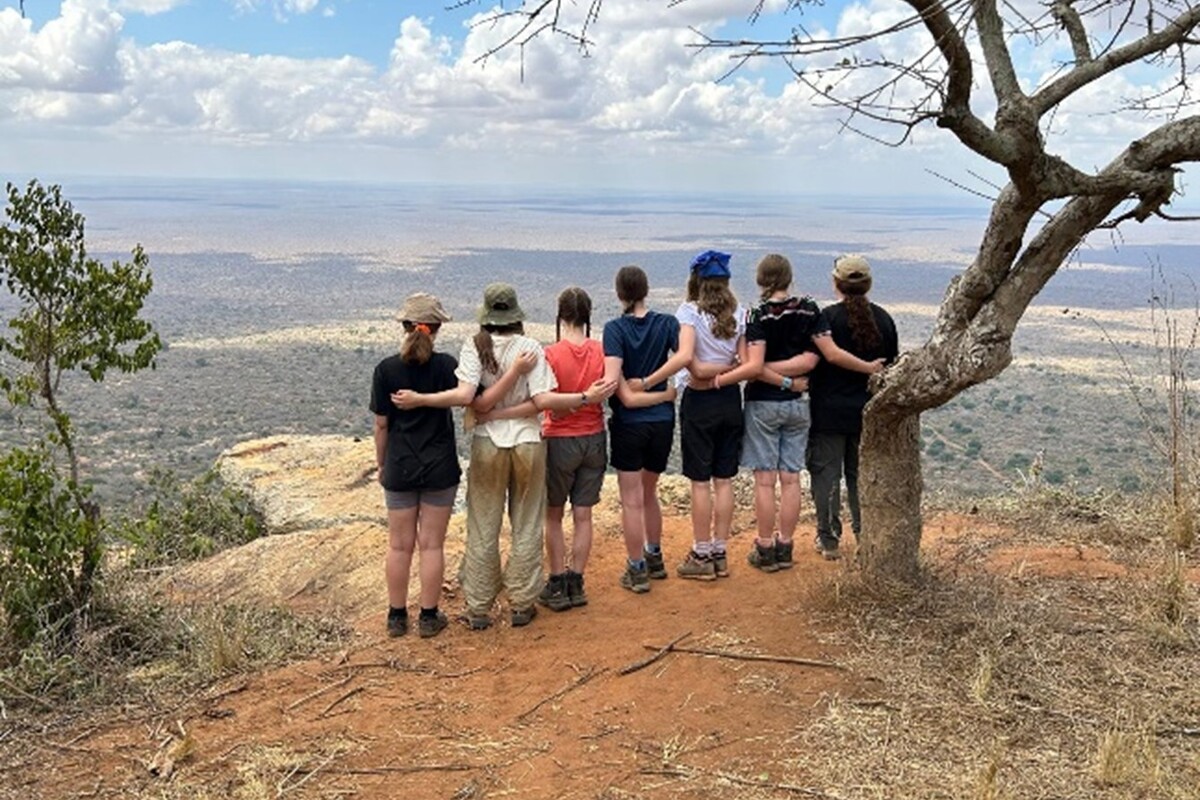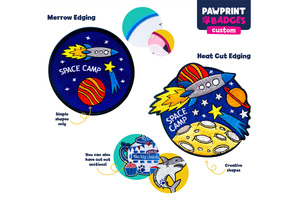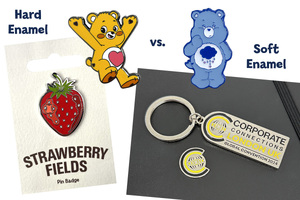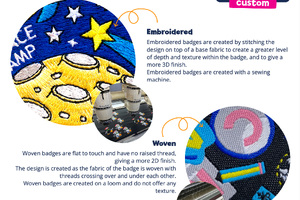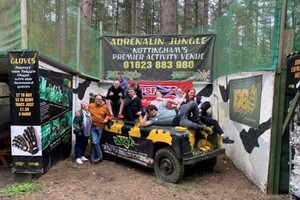Bethany Woodhams, Kenya 2023
Well here I am back from my Kenyan adventures!
I wanted to say a huge thankyou for your very kind donation to my fundraising pot and let you know a little bit about what I got up to.
We started our trip in Nairobi before heading south east to Tsavo and then towards the coast south of Mombasa to Camp Muhaka and Tiwi before heading back to Ndoto in Tsavo and finally the Wildlife Foundation on the edge of Nairobi.
We spent our first full day in Kenya travelling to Camp Tsavo where we were lucky enough to see elephants on the way.
The following morning we travelled a further 5 hours east to Camp Muhaka which was to be home for the next 5 days. Camp Muhaka is situated in the small community of Muhaka and was the most established of the camps we stayed in. We were shown around the village and played with the local children.
Our first project was to help plaster a house for Becca, a local orphan. It really was a reality check to see the living conditions of the community.
Becca was delighted with his newly plastered and painted house. It was a real privilege to help him.
We spent time making bricks at the local school, walking in the Kaya forest with a village elder learning about the medicinal values of the trees and learning how to make chapatis with the women from the village.
For 3 days we had to make a 30 minute walk to the local village to help plaster and build up walls of a family home. We had to collect water from a well and carry it back up the hill to the project. It was hard work in the heat!
Camp Tiwi was our next destination. It is set on a beachfront of sand Island beaches, formerly known as Maweni. The camp is made of bandas built of traditional Swahili architecture giving a typical feeling of the East Africa Swahili community. At this camp we enjoyed working on the community projects in the small village of Maweni, alongside supporting the ongoing effort of the Tiwi Turtle Police on marine conservation which includes beach clean ups and marine education.
One evening we went down to the beach where the Tiwi Turtle Police were releasing baby turtles. We were able to help guide them back into the water. It was an amazing experience. The following day we helped to clean the beach.
The local villagers showed us how to make mandazi (local doughnuts) which were surprisingly tasty. We also got to play with the local children.
Next we headed off to Camp Ndoto. This camp is close to Tsavo East National Park. We were welcomed by the local community with traditional dance. Our projects here were strongly based in the local community, and we took part in a variety of activities. We built the foundations of a family home, made more bricks and taught the children some English. The heat made for pretty hard-working conditions.
We spent a day at the school putting in windows and painting classrooms.
Camp Tsavo was set close to Tsavo East National Park, making it a great place to get stuck in with ongoing conservation and environmental projects. We worked closely with two local schools and a remarkable women's group. We took part in a variety of activities.
We learnt bush skills on the Murungu Hill trail and spent time with the women’s group making elephant poo paper and learning traditional dances.
Being an animal management student I was really looking forward to the last batch of activities in store for us.
I spent one morning feeling like an African veterinary nurse where we helped to medicate 105 goats!!
On a local farm we helped to build an elephant deterrent fence from corrugated metal.
We then headed to the Rukinga wildlife sanctuary to complete an animal transect and to the Tsavo discovery centre to learn about the conservation of the animals in the Nation Park. Next stop was the Tsavo National Park where we were lucky to see 4 out of the Big 5.
We were lucky enough to be invited to a nearby Masai village. We were shown around and were told about their culture.
The last part of our adventure was to do some conservation work at the Wildlife Foundation. We planted trees, installed lion lights to protect the house, set camera traps to see what wildlife was in the area, built a gabion to help local flooding issues and created a pathway for the wildlife.
The food at the camps was always pretty basic, toast for breakfast, lunch and dinner were often lentils or chick peas with rice. It all got very boring after 4 weeks so I was grateful for some variety when I got back home! As we were nearing the end of our trip we decided to donate clothes and toiletries to the local village and it also made our bags lighter for the journey home!
I could go on as I have so many photos but hopefully this gives you a snap shot of the most amazing adventure that I had.
I cannot thank you enough for your contribution to my funding. Camp Kenya has provided me with life skills and memories that will last forever. I hope that skills that I have learnt and developed I can now share with others.
